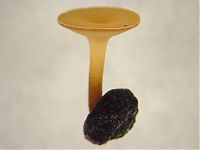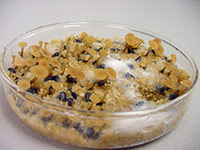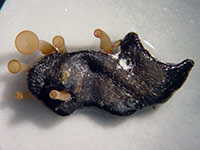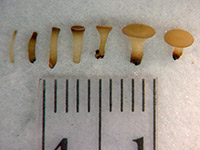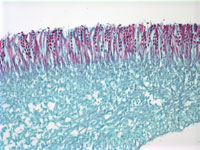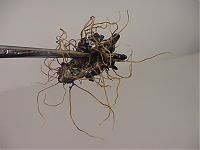Apothecia
Apothecia are the sexual fruiting bodies produced by the polyphyletic group of ascomycete fungi commonly referred to as discomycetes (Leotiomycetes and Pezizomycetes). Sclerotinia sclerotiurum is a homothallic Leotiomycete fungus. It produces stipitate apothecia that originate from inside the sclerotium. Whether fertilization is required for homothallic fruiting in S. sclerotiorum is an unresolved question. Isolates do vary widely for the environmental conditions required to induce apothecia from sclerotia. In general, cool temperatures, free moisture and time are required for conditioning sclerotia for carpogenic germination. If germinated in the dark, sclerotia produce undifferentiated “etiolated” stipes. Under low fluence light, stipes exhibit positive and negative phototropism dependent on the wavelengths of light. Under relatively high fluence light conditions stipe tips differentiate into a fertile disc capable of producing millions of ascospores each.
Updated 28 May 2007 by Jeffrey Rollins.
Videos
Quicktime 7 708KB
Phototropism and Photomorphogenesis. Apothecial stipes require light to differentiate fertile discs. This video shows stipes elongating in the direction of the light source (phtotoropism) and then differentiate into mature apothecia. Note the discharge of ascospores which cloud the lid towards the end of the video. Still images were captured every 2 hours for 14 days to create this time lapse series.
Quicktime 7 601KB
Ascospores are forcibly discharged from apothecia. Millions of spores are released simultaneously when the lid is removed. This video was shot in real time. (Music is optional for discharge,but the spores do seem to enjoy it.)
Pictures
Commenting is closed for this article.
